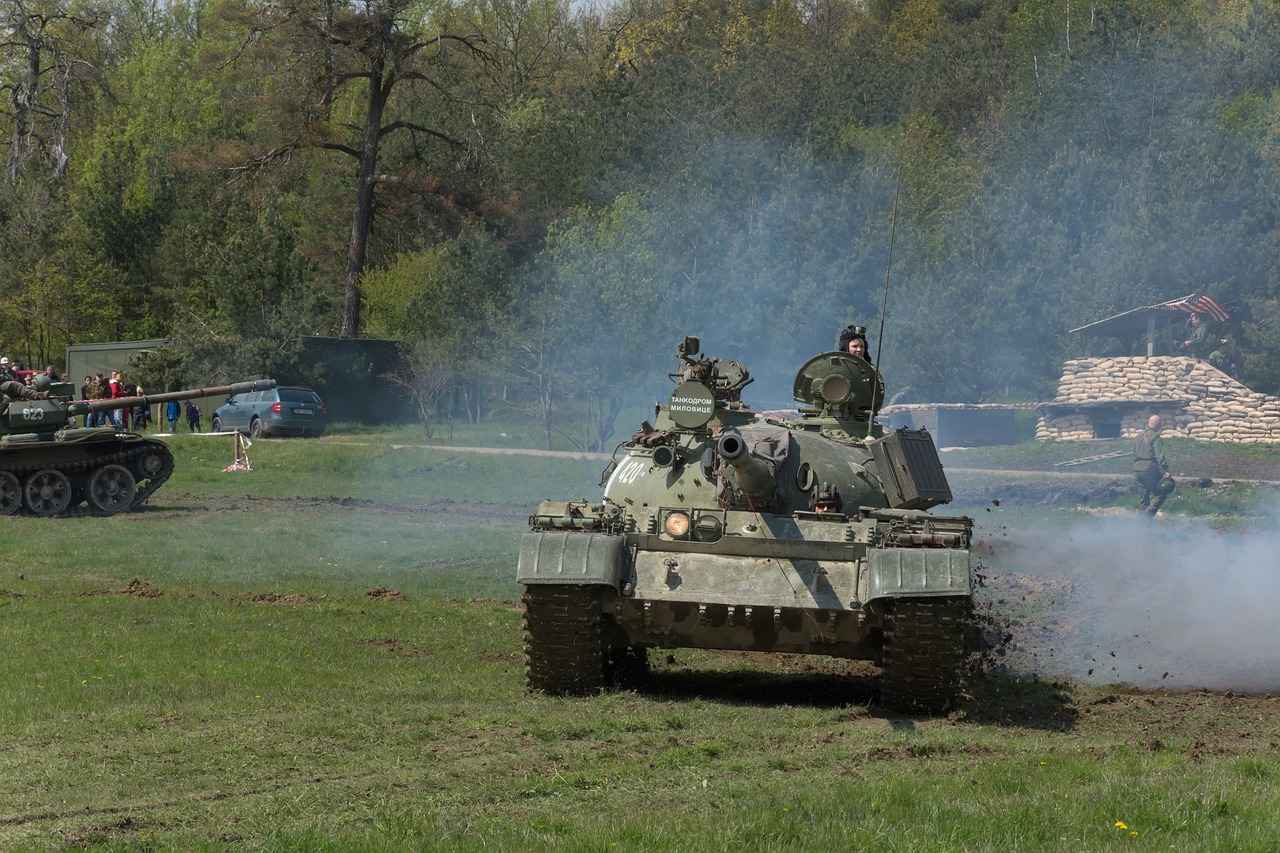This article delves into Snivy, a Grass-type Pokémon, providing an in-depth look at its strengths, move set, and strategies for competitive play. Trainers will gain valuable insights to maximize Snivy’s potential in battles.
Understanding Snivy’s Strengths and Weaknesses
Snivy is known for its unique strengths, including high speed and special defense. However, it also has weaknesses, particularly against Bug, Fire, and Flying types. Recognizing these factors is essential for utilizing Snivy effectively in various battle scenarios.
Best Moveset for Snivy in Competitive Play
Selecting the right moveset is crucial for enhancing Snivy’s performance. Below is a list of optimal moves:
- Leaf Storm – A powerful STAB move with high damage.
- Giga Drain – Provides healing while dealing damage.
- Hidden Power (Fire) – Offers coverage against Steel and Bug types.
- Protect – Useful for stalling and scouting opponents’ moves.
Defensive Strategies for Snivy
To enhance Snivy’s durability, consider the following strategies:
- Equip Sitrus Berry for healing during battles.
- Utilize Leech Seed to sap health from opponents.
- Pair Snivy with Pokémon that can cover its weaknesses.
How to Counter Snivy Effectively
Understanding how to counter Snivy is vital for opponents. Effective counters include:
- Charizard – Exploits Snivy’s weakness to Fire.
- Scyther – Fast and can hit hard with Bug-type moves.
- Braviary – Flying-type moves are particularly effective.
Common Mistakes When Battling with Snivy
Trainers often make mistakes such as:
- Over-relying on offensive moves, neglecting defense.
- Ignoring Snivy’s weaknesses against Fire and Flying types.
- Failing to switch out when faced with strong counters.
Conclusion: Mastering Snivy in Competitive Battles
Mastering Snivy requires a deep understanding of its strengths, optimal moves, and strategic applications in battle. By employing these insights, trainers can significantly enhance their competitive edge and achieve success with Snivy.

Understanding Snivy’s Strengths and Weaknesses
Snivy, the Grass-type Pokémon, is known for its unique blend of strengths and weaknesses that shape its role in competitive battles. By recognizing these factors, trainers can leverage Snivy’s capabilities to gain an advantage against various opponents. This section delves into Snivy’s inherent traits, enabling trainers to maximize its potential on the battlefield.
Strengths of Snivy:
- High Speed: Snivy possesses impressive speed, allowing it to outspeed many opponents. This advantage can be crucial for striking first in battles.
- Good Special Defense: With a solid special defense stat, Snivy can withstand special attacks from opponents, making it a resilient choice in various matchups.
- Access to Support Moves: Snivy can learn a variety of support moves like Leech Seed and Reflect, which can help it sustain itself and its teammates during battles.
Weaknesses of Snivy:
- Low Attack Power: Snivy’s physical attack stat is relatively low, which can limit its effectiveness in dealing damage unless properly supported.
- Vulnerability to Common Types: As a Grass-type Pokémon, Snivy is weak to Fire, Flying, Bug, Poison, and Ice-type moves, making it susceptible to various threats.
- Reliance on Speed: While speed is an advantage, it can also be a double-edged sword; if Snivy is outsped by a stronger opponent, it may struggle to survive.
Understanding these strengths and weaknesses allows trainers to craft effective strategies when using Snivy in competitive battles. By utilizing its speed and special defense while being cautious of its vulnerabilities, trainers can enhance Snivy’s performance and increase their chances of victory.

Best Moveset for Snivy in Competitive Play
When it comes to maximizing Snivy‘s potential in competitive battles, selecting the right moveset is crucial. This Grass-type Pokémon possesses unique abilities that can be enhanced through strategic move choices. In this section, we will delve into the optimal moves for Snivy, focusing on STAB (Same Type Attack Bonus) moves and coverage options that complement its strengths.
STAB moves are vital for increasing damage output, allowing Snivy to capitalize on its Grass typing. The most effective STAB moves for Snivy include:
- Leaf Storm – A powerful Grass-type move that deals significant damage, especially when Snivy’s Special Attack is boosted.
- Energy Ball – Offers a reliable option with decent power and a chance to lower the opponent’s Special Defense.
While Grass-type moves are Snivy’s primary offensive options, incorporating coverage moves can help it handle various threats. Consider these alternatives:
- Hidden Power (Fire) – Useful for countering Steel and Bug types, which are often resistant to Grass attacks.
- Leech Seed – Provides sustainability by draining health from opponents while allowing Snivy to recover.
In addition to offensive capabilities, Snivy can benefit from defensive moves that bolster its survivability:
- Protect – Allows Snivy to shield itself from damage while scouting the opponent’s moves.
- Substitute – Creates a barrier that can absorb damage, giving Snivy a strategic advantage in battle.
By carefully selecting Snivy’s moveset, trainers can significantly enhance its performance in competitive play. The right combination of STAB and coverage moves, along with defensive strategies, will empower Snivy to thrive against a variety of opponents.
Top STAB Moves for Snivy
Snivy, the Grass-type Pokémon, is known for its agility and tactical prowess in battles. To maximize its potential, understanding its STAB (Same Type Attack Bonus) moves is crucial. These moves not only enhance Snivy’s damage output but also provide strategic advantages against various opponents.
STAB moves are vital in competitive play, as they grant a 1.5x damage boost when the move’s type matches the Pokémon’s type. For Snivy, this means leveraging its Grass-type moves effectively. Here are some of the most potent STAB moves available to Snivy:
| Move | Type | Power | Accuracy | Effect |
|---|---|---|---|---|
| Leaf Storm | Grass | 130 | 90% | High damage, lowers Special Attack. |
| Energy Ball | Grass | 90 | 100% | May lower the target’s Special Defense. |
| Giga Drain | Grass | 75 | 100% | Restores half the damage dealt. |
| Leaf Blade | Grass | 90 | 100% | High critical hit ratio. |
Among these, Leaf Storm stands out for its sheer power, making it a formidable choice for offensive strategies. However, trainers should be cautious of its drawback, which can leave Snivy vulnerable by lowering its Special Attack. Alternatively, Energy Ball offers a balanced approach with reliable damage and the potential to debuff opponents. Giga Drain provides sustainability in battles, allowing Snivy to regain health while dealing damage.
In summary, selecting the right STAB moves is essential for maximizing Snivy’s effectiveness in competitive battles. Trainers should consider the situational advantages of each move to create a versatile and powerful strategy.
Grass-type Moves Overview
Grass-type moves are essential to Snivy’s offensive capabilities, as they enable it to effectively engage in battles against various opponents. These moves not only leverage Snivy’s Grass typing for enhanced damage but also provide strategic advantages in diverse battle scenarios.
In competitive play, Snivy can utilize several powerful Grass-type moves. Here is a detailed overview of the best options:
- Leaf Tornado: This move boasts a decent power of 65 and has a chance to lower the target’s accuracy. Its reliability makes it a staple in Snivy’s moveset, especially when facing foes that rely on their accuracy to land critical hits.
- Energy Ball: With a power of 90, Energy Ball is one of Snivy’s most potent STAB (Same Type Attack Bonus) moves. It also has a chance to lower the opponent’s Special Defense, making it a formidable choice against bulkier Pokémon.
- Giga Drain: This move not only deals 75 damage but also restores half of the damage dealt to Snivy, allowing it to maintain its health during battles. Giga Drain is particularly useful in prolonged encounters.
- Leaf Storm: A powerful move with a staggering 130 base power, Leaf Storm can turn the tide of battle. However, it comes with a drawback, as it lowers Snivy’s Special Attack after use. This makes it ideal for a surprise attack against unsuspecting opponents.
Each of these moves offers unique advantages that can be strategically employed depending on the opponent’s weaknesses. For example, while Leaf Tornado may be favored for its accuracy-lowering effect, Energy Ball serves as a strong choice against Pokémon with lower Special Defense.
In summary, understanding the strengths and tactical applications of Snivy’s Grass-type moves is crucial for trainers looking to maximize its potential in competitive battles. By selecting the right moves, trainers can exploit opponents’ weaknesses and secure victories with Snivy.
Alternative Moves for Coverage
In addition to its powerful Grass-type moves, Snivy has access to a variety of alternative moves that can significantly enhance its versatility in competitive battles. Understanding these options is crucial for trainers who want to effectively counter common threats and maximize Snivy’s potential.
One of the most notable alternative moves Snivy can learn is Hidden Power. This move allows Snivy to cover its weaknesses against Steel and Flying types, which are typically resistant to Grass-type attacks. Depending on the type of Hidden Power Snivy possesses, it can provide crucial coverage against various opponents.
Furthermore, Snivy can utilize Leech Seed, which not only inflicts damage but also restores HP over time. This move is particularly useful for wearing down bulky opponents while providing Snivy with sustainability in prolonged battles.
Another strategic option is Encourage, a move that boosts the Attack and Special Attack of Snivy, allowing it to hit harder against foes. This can make Snivy a more formidable opponent, especially when paired with moves that exploit its boosted stats.
Additionally, Snivy can learn Protect, a defensive maneuver that allows it to shield itself from incoming attacks. This move is essential for scouting opponents’ strategies and buying time for recovery or setup.
| Move | Type | Description |
|---|---|---|
| Hidden Power | Varies | Provides coverage against Steel and Flying types. |
| Leech Seed | Grass | Drains HP from the opponent while healing Snivy. |
| Encourage | Normal | Boosts Snivy’s Attack and Special Attack. |
| Protect | Normal | Shields Snivy from damage for one turn. |
By utilizing these alternative moves, Snivy can adapt to various competitive scenarios, making it a more unpredictable and challenging Pokémon to face. Trainers should experiment with different combinations to find the most effective strategies for their battles.
Defensive Strategies for Snivy
In the world of Pokémon battles, defense plays a pivotal role in ensuring a Pokémon’s survival. For Snivy, a Grass-type Pokémon, enhancing its durability is essential for outlasting opponents and turning the tide of battle. This section delves into effective strategies to bolster Snivy’s defensive capabilities, focusing on recommended items and defensive moves.
- Recommended Items for Snivy:
- Leftovers: This item provides passive healing each turn, allowing Snivy to recover some HP, which is crucial during prolonged battles.
- Berry Juice: An excellent choice for early-game battles, it restores Snivy’s health when its HP drops below 50%, giving it a second chance to fight back.
- Assault Vest: Boosts Snivy’s special defense, making it more resilient against special attackers, while still allowing it to utilize offensive moves.
- Defensive Moves to Consider:
- Leech Seed: This move saps the opponent’s health while restoring Snivy’s, creating a sustainable strategy that can wear down foes over time.
- Protect: A vital move for stalling, Protect allows Snivy to avoid damage for a turn, giving it time to heal or assess the opponent’s strategy.
- Reflect: This move halves physical damage for five turns, making Snivy much tougher against physical attackers.
By implementing these strategies, trainers can significantly enhance Snivy’s defensive prowess, allowing it to endure tougher battles. The combination of effective items and moves not only increases Snivy’s survivability but also opens up opportunities for counterattacks, making it a valuable asset in competitive play.

How to Counter Snivy Effectively
Understanding how to effectively counter Snivy is crucial for trainers aiming to gain an advantage in competitive battles. As a Grass-type Pokémon, Snivy has specific strengths and weaknesses that can be exploited. This section delves into the strategies and Pokémon types that can neutralize Snivy’s advantages.
Snivy’s primary weakness lies in its vulnerability to Fire, Flying, Bug, and Ice type moves. Opponents can capitalize on this by selecting Pokémon with these types. Here are some effective counters:
- Fire-type Pokémon: Pokémon like Charmeleon and Growlithe can unleash powerful Fire-type moves such as Flamethrower or Fire Spin, dealing significant damage to Snivy.
- Flying-type Pokémon: Utilizing Pokémon like Pidgeotto or Fletchinder with moves such as Wing Attack can quickly take down Snivy, exploiting its weakness.
- Bug-type Pokémon: Pokémon like Beedrill can use Bug Buzz to hit Snivy hard, taking advantage of its Grass typing.
- Ice-type Pokémon: Pokémon such as Seel or Snorunt can utilize Ice-type moves like Icy Wind to effectively counter Snivy.
In addition to choosing the right Pokémon, it’s essential to consider the moveset. Moves that can inflict status conditions, such as Burn or Freeze, can further diminish Snivy’s effectiveness in battle. Trainers should also be wary of Snivy’s potential to use moves like Leech Seed and Grass Whistle, which can hinder their strategy.
Lastly, positioning and timing are key. Anticipating Snivy’s moves and switching to a counter Pokémon at the right moment can turn the tide of battle. By employing these strategies, trainers can effectively neutralize Snivy’s advantages and secure victory.
Effective Pokémon Counters
When facing Snivy, trainers must be aware of its vulnerabilities in order to gain a competitive advantage. Snivy, being a Grass-type Pokémon, has specific weaknesses that can be exploited by certain Pokémon types. Understanding these counters is essential for those looking to effectively neutralize Snivy’s strengths in battle.
- Fire-type Pokémon: Fire-types are particularly effective against Snivy due to their inherent advantage. Pokémon such as Charmeleon and Arcanine can unleash powerful Fire-type moves, dealing significant damage and potentially knocking out Snivy before it can retaliate.
- Flying-type Pokémon: Flying-types also hold an advantage over Snivy. Pokémon like Pidgeotto and Swellow can utilize moves such as Air Slash or Brave Bird to capitalize on Snivy’s weaknesses, ensuring they remain a step ahead in battles.
- Bug-type Pokémon: Bug-types can be another effective counter, as they exploit Snivy’s Grass-type nature. Pokémon like Beedrill and Scyther can use moves like Bug Buzz to inflict heavy damage.
- Ice-type Pokémon: Ice-types, such as Jynx and Froslass, can also pose a threat to Snivy. Their Ice-type moves can deal considerable damage, making them formidable opponents.
In addition to these types, trainers should consider the overall strategy of their team composition. Utilizing Pokémon with high speed and special attack stats can often turn the tide of battle. By deploying these effective counters, trainers can significantly enhance their chances of defeating Snivy and gaining the upper hand in competitive play.
Common Mistakes When Battling with Snivy
When engaging in competitive battles with Snivy, understanding common mistakes can significantly enhance your performance. This section delves into the frequent errors trainers make while using this Grass-type Pokémon and offers valuable tips on how to avoid these pitfalls.
- Overlooking Snivy’s Type Advantages: Many trainers underestimate the importance of type matchups. Snivy, being a Grass-type, excels against Water, Ground, and Rock types. Failing to capitalize on these advantages can lead to unnecessary losses.
- Ignoring Status Moves: Trainers often focus solely on offensive moves, neglecting the strategic value of status moves such as Leech Seed and Sleep Powder. These moves can provide significant advantages by inflicting status conditions on opponents.
- Underutilizing Defensive Options: Snivy possesses decent speed and access to moves like Protect and Reflect. Many trainers fail to incorporate these defensive strategies, which can help Snivy endure longer in battles.
- Inadequate Move Diversity: A common mistake is relying on a limited moveset. Snivy can learn various moves that provide coverage against common threats. Trainers should explore options beyond typical Grass-type moves to enhance versatility.
- Neglecting Team Synergy: Snivy should be used in conjunction with teammates that can cover its weaknesses, such as Bug, Fire, and Flying types. Many trainers overlook the importance of team composition, which can lead to unfavorable matchups.
By being aware of these common pitfalls, trainers can make more informed decisions during battles. Avoiding these mistakes will not only improve Snivy’s performance but also enhance overall battle strategy, leading to greater success in competitive scenarios.

Conclusion: Mastering Snivy in Competitive Battles
In the realm of Pokémon battles, Snivy stands out as a versatile Grass-type Pokémon with unique attributes that can turn the tide of combat when utilized effectively. To truly master Snivy, trainers must delve into its strengths, optimal moves, and strategic applications. This understanding not only enhances performance but also enriches the overall gaming experience.
Firstly, it is essential to recognize that Snivy’s primary strength lies in its speed and special defense. This allows it to outpace many opponents, striking first and potentially incapacitating them before they can react. Additionally, its access to moves like Leaf Storm and Giga Drain provides significant offensive capabilities, particularly when considering STAB (Same Type Attack Bonus) advantages. Trainers should also be aware of Snivy’s weaknesses, primarily to Bug, Flying, Fire, and Ice types, which can exploit its vulnerabilities.
When it comes to assembling a moveset for competitive play, trainers should focus on a combination of STAB moves and coverage options. Incorporating moves such as Hidden Power (Fire) can effectively counter Bug and Steel types that threaten Snivy. Moreover, defensive strategies, including the use of items like Berry Juice or Leftovers, can enhance Snivy’s survivability, allowing it to remain in battle longer and contribute to the team.
In conclusion, mastering Snivy is not merely about understanding its capabilities but also about recognizing how to implement strategies that maximize its potential. By leveraging knowledge of its strengths, moves, and effective tactics, trainers can significantly enhance their competitive edge, leading to more successful battles with Snivy. Embracing these insights will undoubtedly lead to a richer and more rewarding Pokémon experience.
